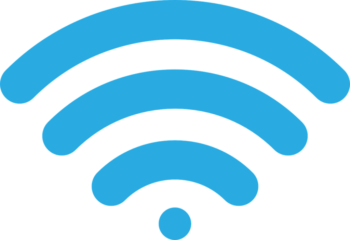

Here we can see the 2.4GHz band is available on channels 2-14, and strongest in channels 5-14. Navigating to the specific channels tabs gives you details about the band channel frequency: In NetSpot, navigating to 'Discover > Show details of selected networks' from the menu bar brings up a new window. Everyone is on the same band, on the same channel, and it gets noisy.īands also have unique channels available to them, and each channel has unique resonance. As an example, if your whole neighborhood was on a 2.4GHz band, and everyone was on channel 6, there would be a lot of interference. In the screenshot below, we'll focus on two areas: channel, and level (SNR).Ĭhannels are like fine-tuning for wifi bands. In addition to bands, channels are critical.

This is handy, but NetSpot takes it a step further in offering granular details about your signals. On its main screen, you'll see all of the available networks in your area. NetSpot is a robust wifi channel scanner that returns a ton of data. Instead, we have two options you'll want to check out: NetSpot, and Wifi Explorer. Your Mac's built-in wifi analyzer is great for identifying which channels are available to you, but going beyond that requires a lot of fiddling with settings most of us won't be comfortable with.
Checking wireless signal strength how to#
Also, read our article how to see wifi password on mac. Most are likely locked, as they're private, but this is a good illustration of how crowded the airwaves are for wifi signals. As you can see in the screenshot above, a normal environment will have tons of wifi signals available for your Mac. This is how to see all the wifi networks available to you. Make sure 'show wi-fi status in menu bar' is selected so you can check these networks right from the menu bar, just select the drop-down menu under the wifi icon. Check all wifi networks available to you via clicking to your Network Name.From your menu bar, click the Apple logo > System preferences.Here's how to check available networks on your Mac: Your first option is to identify which wifi signals are available to you. If you're in the same room as your router, and your machine has a direct line of sight, 5GHz is typically your best bet.īecause the 2.4GHz band reaches further, there's a chance you'll see interference, though this is typically a problem for older routers. The 2.4GHz band is technically slower, but has the distinct advantage of being able to reach further than the 5GHz band.Īnd the 5GHz band is much faster than the 2.4GHz band, but you have to be fairly close to the router, and the 5GHz wifi band has trouble with objects like walls or doors. There are two major wifi bands: 2.4GHz, and 5GHz. There are myriad factors that can influence which signal is actually best for you.

Which channel the best for WiFiĭeciding which wifi channel is the best option is highly subjective. Each of these ranges gets divided into smaller slots that are channels. Most routers and devices support several bands for your WiFi connection, most popular being 5 GHz and 2.4 GHz. Turn on GPS and click on My position.A WiFi channel is the frequency at which your router sends out the information to your device. You can also see and track your current location by using GPS. A lot depends also on the efficiency of the phone (antennas in phones differ from each other and are often quite significant differences). Please note that the signal of the mobile network and WiFi connections during the day are worse than at night. dBm readings take a few seconds to refresh, so walk slowly. You should also choose the best place for the router. You can measure the signal strength either with WiFi or with Mobile Data. The lack of blue icon means that the connection to the cellular network may be broken (≥ -110 dBm). If the wheel exceeds the display in the phone, generally considered poor signal (≥ -100 dBm). Large circle, generally considered good signal (≈ -70 dBm). Medium circle, generally considered great signal (≈ -55 dBm). Small circle, generally considered great signal (≥ -40 dBm - decibel-milliwatts). The valuesare given for the mobile phone.

You will receive a circle with a small, round, blue icon in the center. The application begins to measure the signal strength of the wireless network. Click on the button at the top right of the map. Do you want to measure 'RSSI' - mobile network signal strength and WiFi connection? Click on My position.


 0 kommentar(er)
0 kommentar(er)
